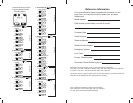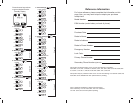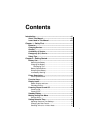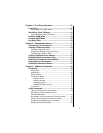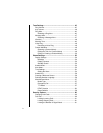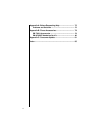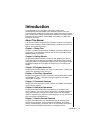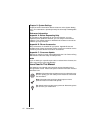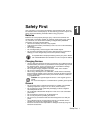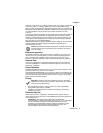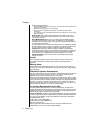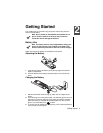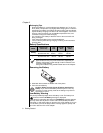
Introduction vii
Introduction
Introduction
Congratulations on your purchase of one of the world’s most
technologically advanced mobile communications systems! Your new
Panasonic phone combines the advantages of digital and analog coverage
with a variety of time-saving and easy-to-use features. The result: a phone
that offers real convenience, dependability, and mobility—in digital
and
analog service areas.
About This Manual
This manual contains comprehensive instructions for each of your phone’s
features. From making a call to troubleshooting a problem, the answers to
most of your questions are here.
Chapter 1:
Safety First
Chapter 1 includes important safety and battery information. Whether you
are a novice or an experienced cellular user, be sure to read this section
before
operating your phone.
Chapter 2:
Getting Started
Chapter 2 describes the basics of setting up and operating your phone.
From connecting and charging your battery, describing the phone’s keys
and display icons, moving through the feature menu, and using the Private
Handsfree Headset, this is the place to turn when you are ready to get
started.
Chapter 3:
Everyday Operations
Chapter 3 covers those features you’ll use on a daily basis — placing and
ending calls, answering calls, and so on.
Chapter 4:
Text Entry Operations
Chapter 4 covers the two modes of text entry: letter-by-letter entry and the
new WORD T9
®
entry — designed to give you rapid text entry when
sending text messages.
Chapter 5:
Phonebook Features
Chapter 5 covers how to save names, numbers, and additional information
in your phone’s memory.
Chapter 6:
Additional Operations
Chapter 6 describes those features that allow you to customize your
phone’s settings. You can set alarms, record voice commands to perform
many phone functions, change your standby screen and other display
features, and switch your phone to another language. You can also secure
your phone from unauthorized use.
Chapter 7:
Service Provider Features
Chapter 7 describes how to use features that may be offered by your
wireless service provider, such as Caller ID, Call Waiting, Three-Way
Calling, Text Messaging, Voice Mail, and so on. Check with your wireless
service provider for complete information on available services.



